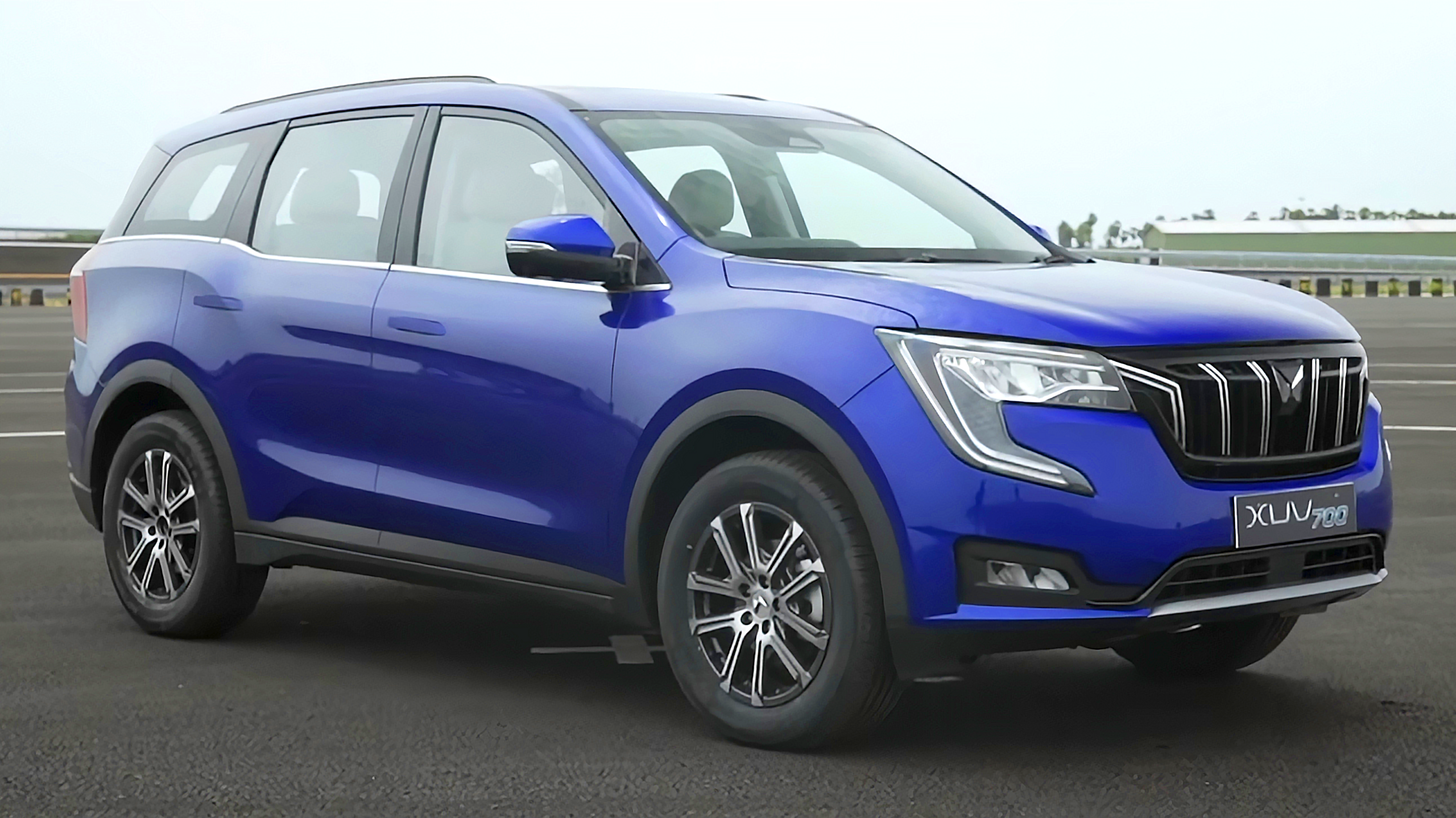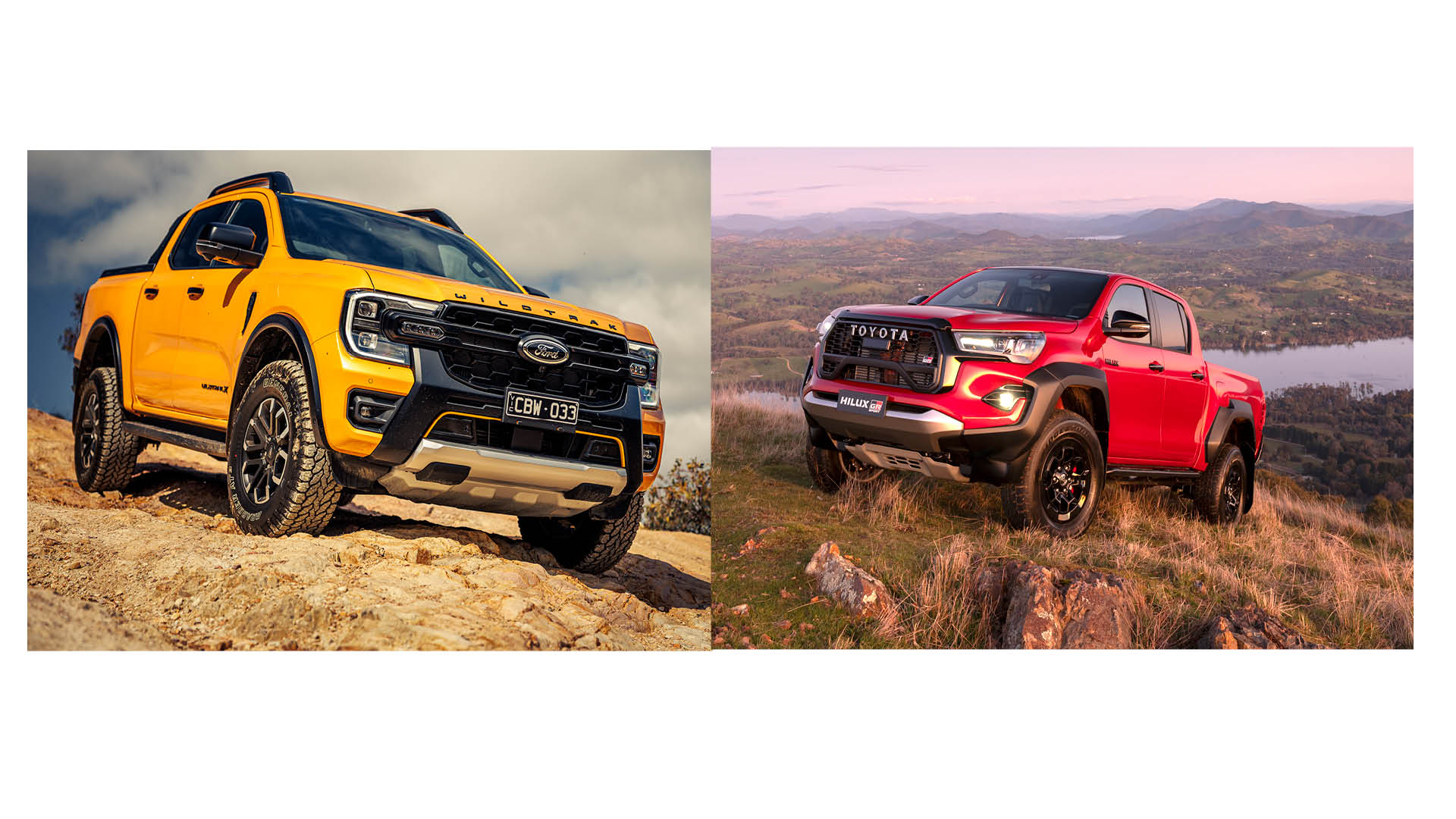ISUZU refines its popular D-Max dual-cab for 2018 with minor interior updates and, crucially, suspension tweaks to tap further into the ute boom.
WHAT IS IT?
One of just two models from Isuzu’s range in Australia, the D-Max dual-cab ute has been a sales success, proving popular with both tradies and families for its no-frills approach and budget performance.
WHY WE’RE TESTING IT
The 2018 update for the D-Max hopes to answer consumer complaints about its unrefined ride when driven without a load, while also improving interior comfort and quality. The Japanese company is hoping these small changes can make a big difference.

Toyota Hilux, Ford Ranger, Nissan Navara, Mitsubishi Triton, Mazda BT-50, Holden Colorado
THE WHEELS VERDICT
A change in rear suspension set-up has improved the D-Max’s on-road manners and refinement, while retaining its impressive off-road and towing capabilities.
PLUS: Improved unladen ride, under-stressed engine, towing ability MINUS: No reach adjustment for steering wheel, no LSD or rear diff-lock option, lack of active safety, ageing infotainment
THE WHEELS REVIEW
HERE’S a fun fact: despite only selling two models here in Australia, Japanese manufacturer Isuzu regularly outsells German heavyweights like Audi and BMW.
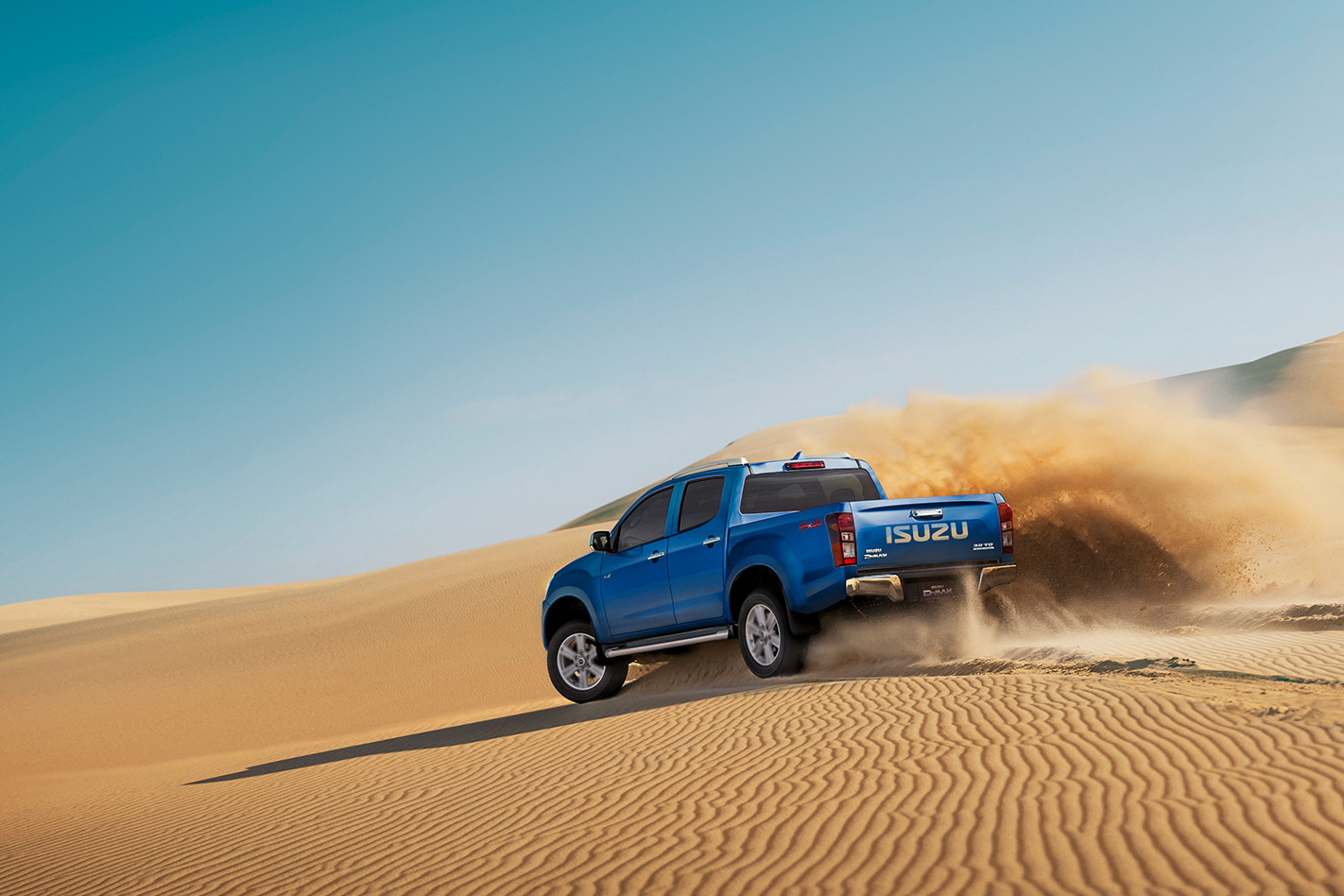
Of the two, the D-Max does the heavy sales lifting, and has been updated for 2018. It has a well-earned reputation for rugged reliability and gutsy, unstressed performance from its 3.0-litre common-rail four-cylinder turbo-diesel engine (borrowed from Isuzu’s track range). There is an air of ‘no-frills’ honesty with the D-Max.
So, rather than upset the apple cart the updates for 2018 are minor, though they do focus on rectifying core complaints from customers around ride quality and interior comfort.
From the outside not much has changed, with the only visual difference being the addition of two new colours for the range-topping LS-T, which is now a permanent fixture in the range. Previously, the LS-T was part of a local evaluation to gauge Australia’s appetite for a more highly-specced, and more expensive, variant. Fair to say the test went well.
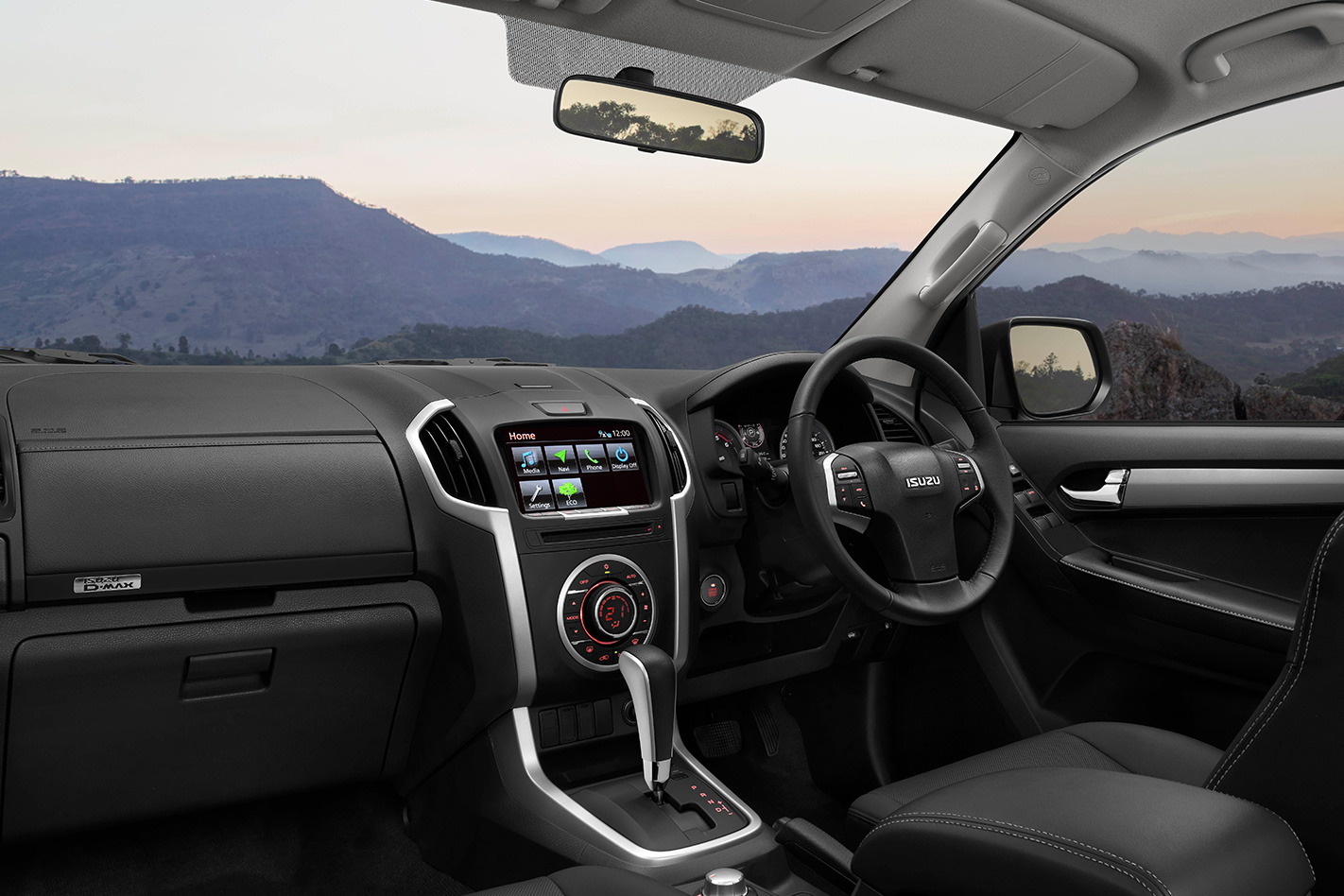
The seat changes are the most noticeable and do well to provide improved lateral support, the perforated leather providing nice cushioning, where older models had you sliding around on synthetic trim. If only the ageing infotainment system had taken a similar step forward. Against fresher rivals, the D-Max’s system feel a generation behind.
While the LS-T sits at the top of Isuzu’s dual-cab tree (at $54,700), the LS-M is the entry point at $49,000 (with a six-speed manual), with the LS-U the middle child at $50,900 with a standard automatic.
Both the LS-U and LS-T are available with either a 4×4 or 4×2 drivetrain, while the LS-M is offered only in 4X4 spec. The LS-T is only sold with a six-speed automatic transmission, while both the LS-M and LS-U can be specced with a six-speed manual (dropping $2100 from the price).
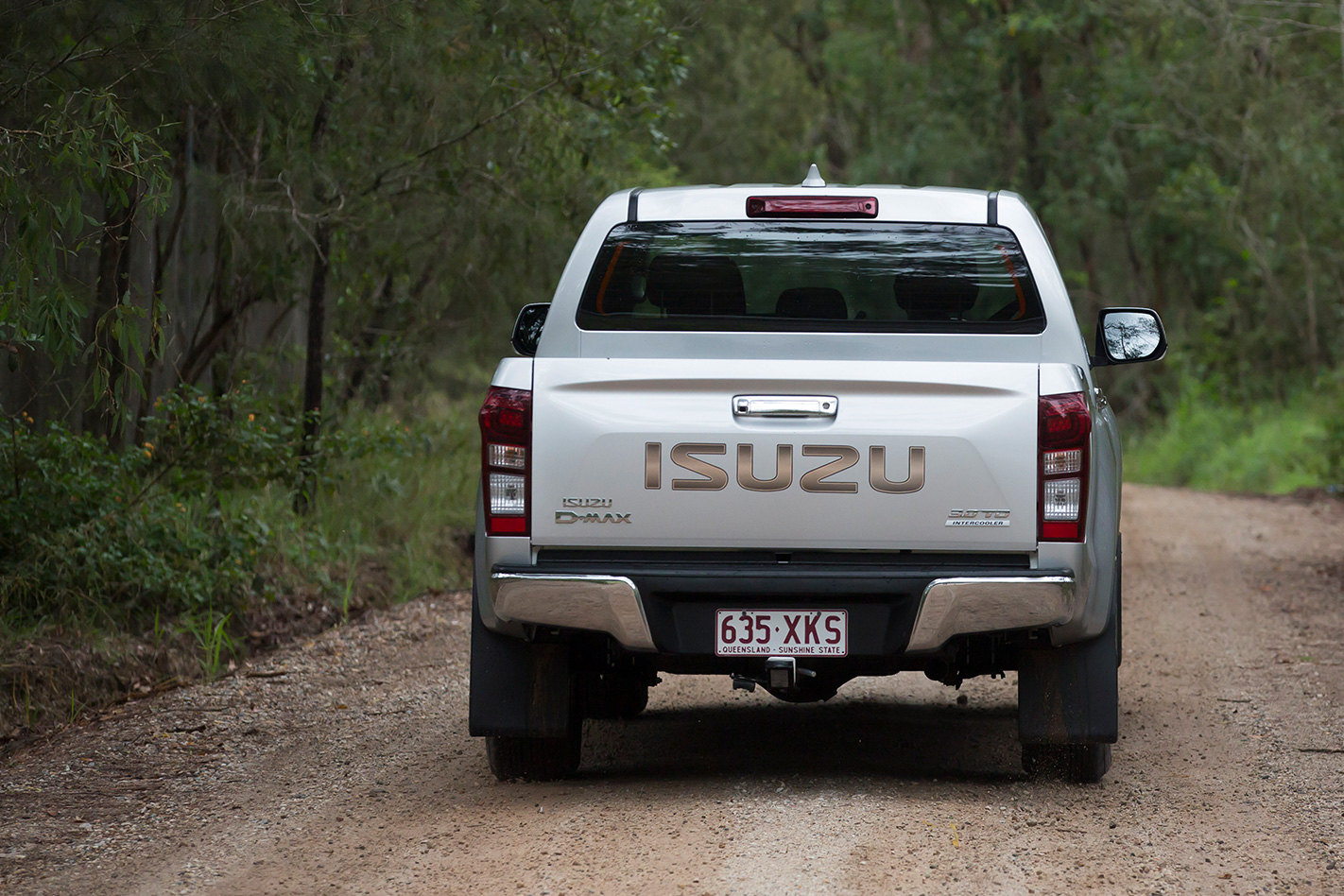
Towing ability is one of the D-Max’s strengths, with its 3500kg rating the best in class. We tested the MY18 model with over 600kg in the tray, then with a 1700kg boat hitched, followed by a 1900kg caravan. In all instances the D-Max remained unfussed by the significant added weight, with the automatic gearbox only having to search for a lower ratio on steep, uphill sections.
This is helped by the muscular 130kW/480Nm diesel, which delivers its peak torque figure from 2000rpm. While those numbers won’t win you pub bragging rights, in the real world, the 3.0-litre engine in the D-Max is a strong, capable unit.
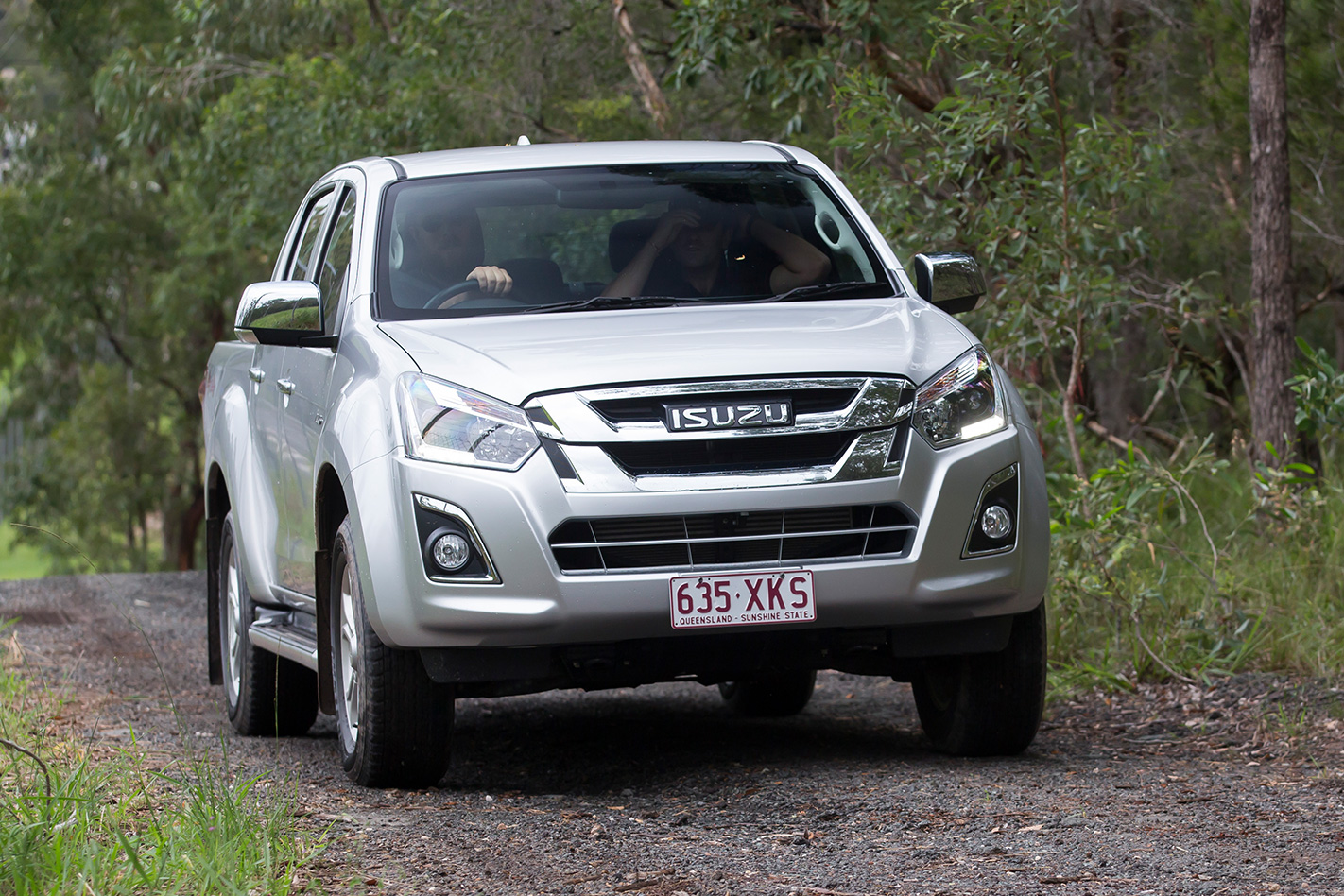
MY18 models now utilise a three-leaf rear suspension set-up (instead of the old model’s five-leaf configuration) which is combined with a minor adjustment to the rear shocks.
And the results are noticeable. Where previously an unladen D-Max would have a harsh ride, telegramming bumps from the road into the cabin, the new suspension is much more compliant.
We drove the MY17 and MY18 models back-to-back on the same roads, and there was a significant improvement with the three-leaf set-up, removing the harsh ‘bouncy’ stiffness of older models, and instead offering a plusher ride.
A more refined suspension goes a long way to catering to a ute’s dual-purpose of juggling utility and family duties, but the D-Max still nudges further towards a work vehicle than its competitors.
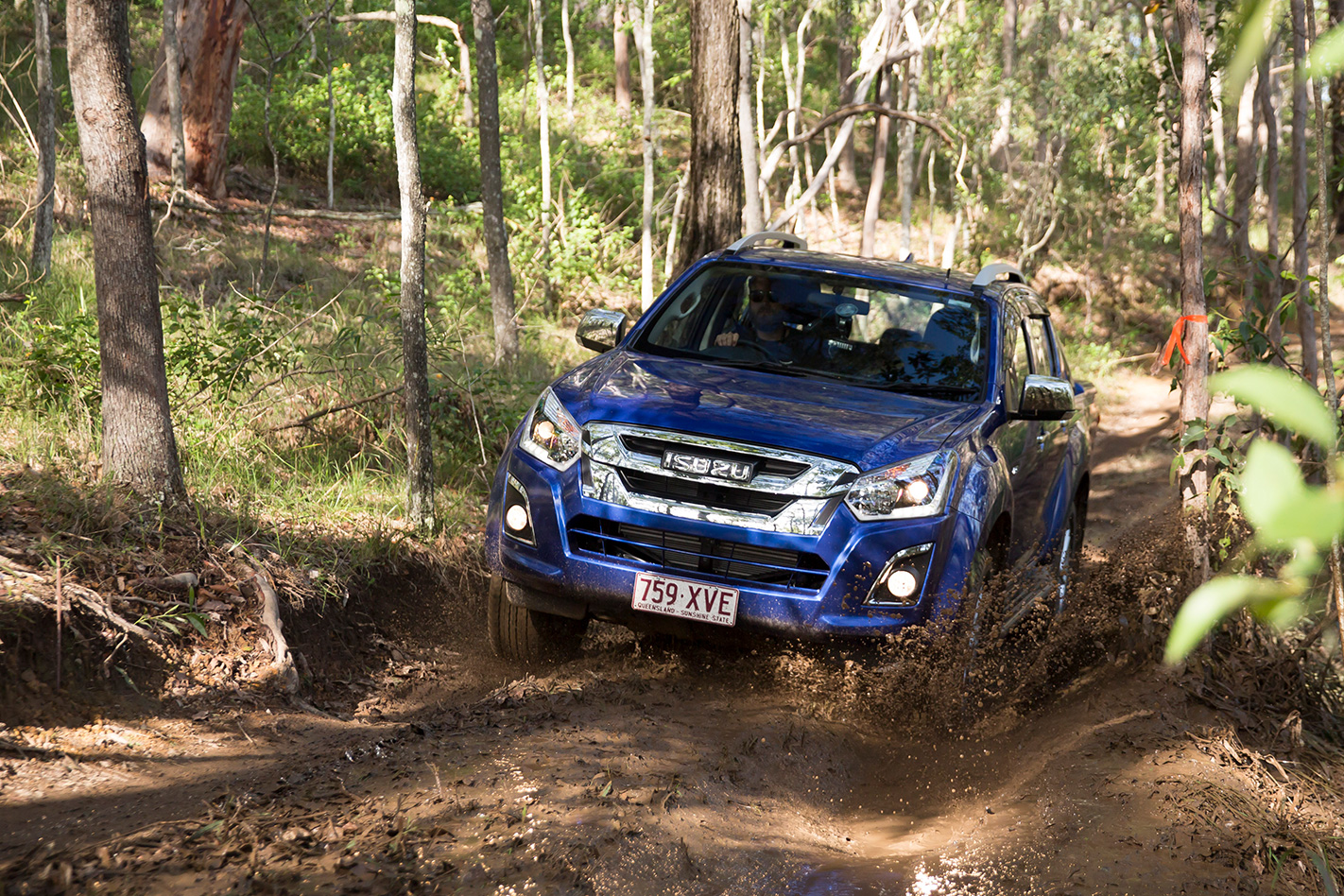
So while this M18 update brings a welcome dose of comfort and refinement, the D-Max remains a dual-cab for customers who will prioritise its class-leading towing ability and strong off-road credentials. Yes it’s now more comfortable than ever, but the D-Max still sits closer to the work-site than inner-city driveway, with other rivals such as the Ford Ranger offering more car-like manners.
SPECS
Model: 2018 Isuzu D-Max LS-T Engine: 2999cc 4cyl, dohc, 16v turbo-diesel Max power: 130kW @ 3600rpm Max torque: 430Nm @ 2000rpm Transmission: Six-speed automatic Weight: 2026kg 0-100km/h: N/A Fuel economy: 7.7L/100km Price: $54,700





